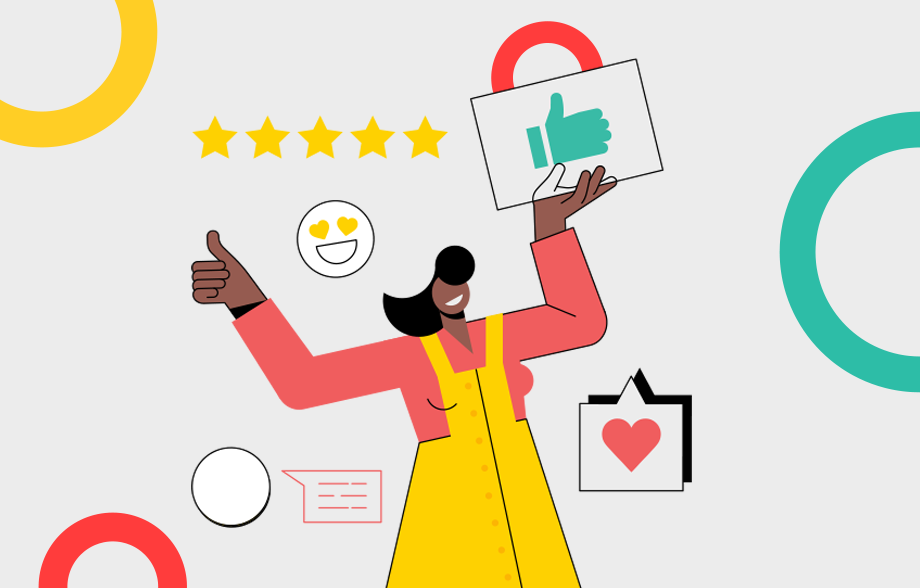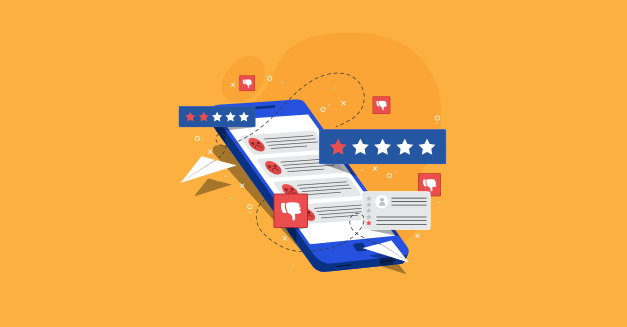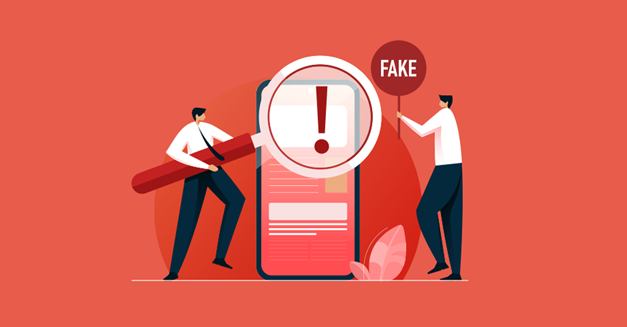Customer Feedback Loop Best Practices To Follow in 2022
HubSpot C.E.O. Brian Halligan says, “Feedback is the breakfast of champions.”. We cannot do more of what is right if we don’t know what is right. We can’t do less if we don’t know what’s wrong. And therefore, customer feedback loop stands as the bedrock of any business.
It is one thing to collect and analyze customer feedback, but acting on it makes the whole process worthwhile.
Do you need a platform for managing customer communications? With Xoopah’s Contact Hub, you can streamline customer communication and operations.
With Xoopah’s Contact Hub, you can send messages, and emails, collect payments, organize clients into groups, and send promotional offers. With the right tools, Xoopah ensures that your small or medium-sized business will deliver top results.
When you have the right platform, achieving customer satisfaction is never too complicated.
Why is the Customer Feedback Loop Important?

Retaining new customers is 5 to 25 times more expensive than retaining existing customers.
The customer feedback loop is a key process for businesses to ensure they are providing the best possible products and services to their customers. Businesses can make necessary adjustments to improve the customer experience by constantly collecting and analyzing customer feedback.
Customer feedback helps businesses understand what their customers want and need, identify areas of improvement, and make changes that will satisfy customers. Additionally, by analyzing feedback data over time, businesses can identify patterns and trends to improve their products and services.
The customer feedback loop is an essential part of any business’s operations and should be given the attention it deserves to ensure a positive customer experience.
But one aspect of client service that even successful businesses frequently overlooks is how to follow up with clients effectively. Most organizations still employ these two simple rudimentary tactics, if at all, when closing the loop:
- They make follow-up calls or send emails after a purchase has been made.
- They wait for customers to reach out to them with feedback, whether positive or negative.
While both methods have their advantages, they are incomplete because they only focus on one end of the customer feedback loop: the beginning.
To create a complete customer feedback loop, businesses must focus on the entire customer journey, from beginning to end. By doing so, they can collect feedback at every stage of the customer experience and use it to improve their products and services. Additionally, they can use feedback to prevent problems and resolve issues more quickly.
The A.C.A.F. Customer Feedback Loop
There’s a strategic system for gathering and implementing customer feedback: The A.C.A.F. Customer Feedback Loop. Here’s how it works:
Step one: asking for feedback

Asking for customer feedback can be a great way to get an insight into how your business is doing and what areas need improvement. It can also help to build rapport with customers and create a sense of transparency. However, it’s important to ask for feedback in the right way.
One effective method is to send out surveys after each interaction with a customer. This could be after a purchase is made or after a service is provided. Surveys can be sent out via email or text, and they should be short and concise to encourage customer participation.
Another way to ask for feedback is to encourage customers to leave reviews on your website or social media pages. This can provide valuable insights into the customer experience, and it can also help to increase search engine visibility for your business.
Asking for feedback doesn’t have to be complicated – just a few simple steps can make a big difference.
Communication is one of the most important elements of a successful customer experience. You need best-in-class tools to retain and service your customers through various channels to ensure that you stay in touch with them. Through multiple channels, Xoopah delivers an overall and consistent customer experience.
Step two: categorizing the information
When it comes to customer feedback, it can be helpful to categorize it to understand better what customers are saying.
For example, you might categorize feedback by type of feedback (positive, negative, or neutral), by product or service (for example, feedback about a specific product or service), or by topic (for example, feedback about shipping, customer service, etc.).
You can also categorize feedback by how customers want the issue to be resolved (for example, “I’d like a refund” or “I’d like this product to be replaced”). Categorizing customer feedback can help you to quickly and easily identify patterns and trends and prioritize which issues need to be addressed first.
Whichever method you choose, categorizing customer feedback can help you make sense of all the information you receive. It can also help you prioritize your follow-up and act on the most important issues. So, take a few minutes to figure out the best way to categorize feedback for your business – it will save you time in the long run!
Step three: implementing the feedback
Keep in mind that feedback, whether it’s positive or negative, is always valuable. If you’re receiving compliments, it means you’re doing something right and should keep up the good work. On the other hand, if you’re receiving criticism, it’s an opportunity to learn and improve.
Of course, it’s not always easy to take constructive criticism well. If you find yourself defensive or feeling angry when hearing negative feedback, try to take a step back and think about the situation objectively. It can be helpful to remind yourself that the person giving the feedback is trying to help you, not hurt you.
Once you’ve calmed down, listen to what the person is saying and if there’s any validity in their comments.
If so, make a plan to change the behavior or improve in the mentioned area. Regardless of how you feel about it initially, remember that feedback is an opportunity to bring out the best version of your customer service.
Step four: following up on the feedback
Getting customer feedback is just half the battle. Getting the same feedback from a customer twice means you didn’t address the issue after they raised it the first time. As a result, your customer service and feedback processes will lose credibility.
The best way to learn is by doing. And the best way to get better at something is to get feedback and follow up on it. Feedback tells you how you’re doing, where you’re excelling, and where you need to improve.
But it’s only useful if you follow up on it. Follow on the feedback you receive, and you’ll be sure to see results. If you don’t, you’ll only be frustrated with yourself and wonder why your efforts aren’t paying off.
Things to Note
There are times when the customer isn’t right
Even though your customers’ feedback is incredibly valuable, responding to all of it would be a mistake. They probably don’t know about some aspects of your business and strategy, and it’s a rare offering that fits everyone. Listen carefully to the people within your target audience, but the general aim is to identify common trends and issues and prioritize them.
There is no better friend than technology

A continuous and seamless feedback loop should be in place for your customers. Sometimes, this requires a lot of intervention from a dedicated team. Software solutions can save time and money, so it’s worth exploring them. In addition to gathering customer feedback from wherever it comes, these platforms allow you to engage directly with them.
Example of Closing Customer Feedback Loops
Depending on your goals, team, and stage of the customer feedback journey, you’ll need to tailor your customer feedback loop. Here are some examples of closing the loop in different business scenarios.
Extending and improving existing products:
Without real market feedback, product managers face many challenges when setting roadmap priorities. When building the right products for their customers, how can they be sure they’re doing it right?
Customer feedback (either yours or that of the competition) can help you understand your customers’ needs and design a product to meet them.
No one knows more about your products and services than your customers do, and monitoring their feedback over time can help you understand the value of your products and services. Assist your product team in scoping new features, identifying escalated bugs and feedback requests, vetting them, and prioritizing their work by listening to the voice of the customer. Following the implementation of changes, you’ll be able to increase customer loyalty by closing the loop with those who left feedback.
You need feedback loops for your products and services to evolve and provide a great customer experience. Connecting all your feedback and analyzing it to improve customer experience is crucial – and Xoopah can do it instantly.
With customer feedback at the center of the experience design process, we can enhance your feedback loops and provide you with all the data you need to create an exceptional customer experience.
Introducing a new product:
Customers’ feedback can help find new growth potentials or discover industry trends as they emerge. You can gain an edge over the competition by monitoring and analyzing online reviews, forums, and social media feedback.
Conduct product market research to discover what customers need, and if there are any specific features they want.
Build the product your customers need.
You can find customer pain points and areas of improvement with a customer feedback loop, regardless of where your business is located or your area of expertise.
Bottom Line
Coordinating all of this at scale requires the cooperation of the entire organization. Aggregating data to create a single source of truth and closing the outer loop with customers are all part of the process. Tools like Xoopah assist with every step of customer feedback loop creation and execution.
To close the inner feedback loop, you need to ensure feedback is delivered and executed internally so the right insights are sent to the right teams for them to make the best decision for the customer. By closing the outer feedback loop, you are letting the customer know their feedback was heard and changes have been made. Including your customers in a dialogue about positive change and action based on their needs not only assists your business in driving forward with a customer-centric growth strategy but also keeps them happy.






